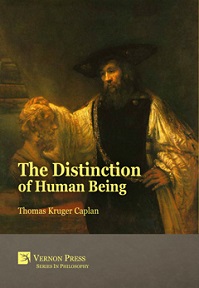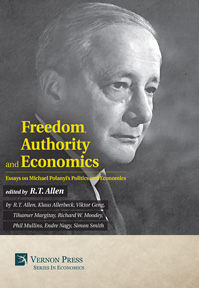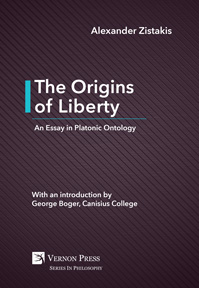Essay on Human Reason: On the Principle of Identity and Difference
by Nikola Stojkoski
Purchase this book
(click here to change currency)
The nature of human reason is one of the thorniest of mysteries in philosophy. The reason appears in many specific forms within general areas such as cognition, thinking, experiencing beauty, and moral judgment. These forms are “perfectly” known in philosophy, yet an unknown pattern has been noticed which shows us that they are all a variation of the same theme: truth is an identity relation between the “thought” and “reality”; justice is an identity relation between the given and the deserved; beauty is an identity relation as rhyme is an identity relation between the final sounds of words; rhythm is an identity relation between time intervals; symmetry is an identity relation between two halves; proportion is an identity relation between two ratios; anaphora is an identity relation between the initial words. Particular things are identities in themselves and universals are identities between particulars. One idea associates another idea identical to it; an analogy is an identity between relations; induction is an identification between the known and unknown instances; and all the logic rests on the law of identity. What is common for all of them is the nature of reason itself.
Introduction
1. REASON AS A COGNITIVE SUBJECT
1.1 It Is All in Our Heads
1.2 What Is a Thing?
1.2.1. What Is a Particular Thing?
1.2.2 What Is a Universal Thing?
1.3 Knowledge of Sensations – Where the Material Touches the Mental
1.3.1 Heartcore
1.3.2 On the Difference between Being and Non-Being
1.3.3 On the Quantitative Relation between Reality as We Know It and Reality in Itself
1.3.4 Problem of Justification
1.4 Cognition of Perceptions
1.5 Cognition of Universals
2. REASON AS A THINKING SUBJECT
2.1 Induction
2.2 Deduction
2.3 Analogy
2.4 Analysis
2.5 Association
2.6 Abstraction
2.7 Generalization
2.8 Categorization
2.9. Definition
3. REASON AS A LOGICAL SUBJECT – TRUTH
3.1 Truth Is an Identity Relation
3.2 Correspondence
3.3 Sketch of an Alternative Theory of Truth
3.3.1Relation between Independent Reality as We Know It and Dependent Reality as We Know It
3.3.2 Three Types of Truth
4. REASON AS AN AESTHETICAL SUBJECT – BEAUTY
4.1 Classical Theory of Beauty
4.2 Analysis of Aesthetical Categories
4.3 Enslaving of the Muses
4.4 Ontology of Beauty
4.4.1 The ‘Hard’ Meaning of Distinction
4.4.2 The ‘Soft’ Meaning of Distinction
5. REASON AS A MORAL SUBJECT – GOODNESS
5.1 Equality Is the Essence of Morality
5.2 Justice
5.3 Golden Rule of Ethics
5.4 Categorical Imperative
5.5 Analysis of Ethical Categories
5.6 On the Problem of Justification or the Source of Morality
Philosophical Monolith
Bibliography
Index
Nikola Stojkoski was born in Bitola, the Republic of Macedonia, in 1980. He earned a degree in philosophy from the University of Saints Cyril and Methodius in Skopje, Macedonia, in 2006. Since graduating, he has worked as a school teacher while continuing to develop his philosophical ideas. In a competition organized by the Philosophical Society of Macedonia and “AZ-Buki” publishing house, his essay “Solving the paradox of clocks within the classical theory” was awarded the prize for the best philosophical essay. The essay was later published by the philosophical portal “Akindin” in 2011. His most recent essay "Reason as ability for identification and differentiation" was presented at the 2017 Philosophical Society of Macedonia symposium "ΛOΓΟΣ and ΤΡOΠΟΣ." His current research interests include the theory of perception, metaphysics, the theory of beauty, and meta-ethics.
reason, identity, difference, uniformity, beauty, truth, goodness, knowledge, cognition, metaphysics, sensory experience, epistemology
See also
Bibliographic Information
Book Title
Essay on Human Reason: On the Principle of Identity and Difference
ISBN
978-1-62273-379-8
Edition
1st
Number of pages
136
Physical size
236mm x 160mm

![Essay on Human Reason: On the Principle of Identity and Difference [Hardback]](/file/5340/6bc728ebf6b2fd4a780a8efed6dc6ccd/1518003315.jpg)






